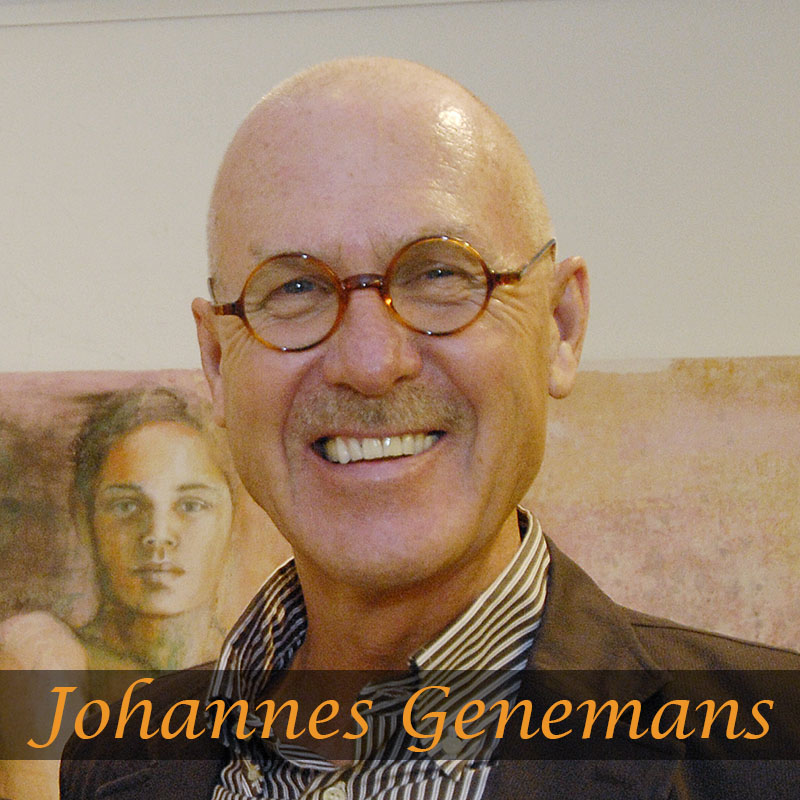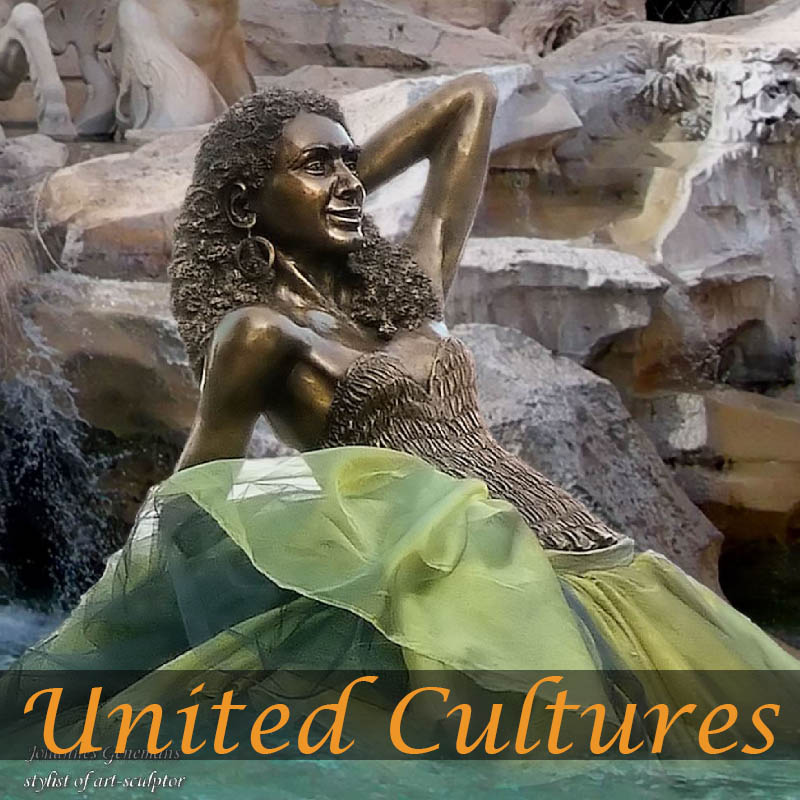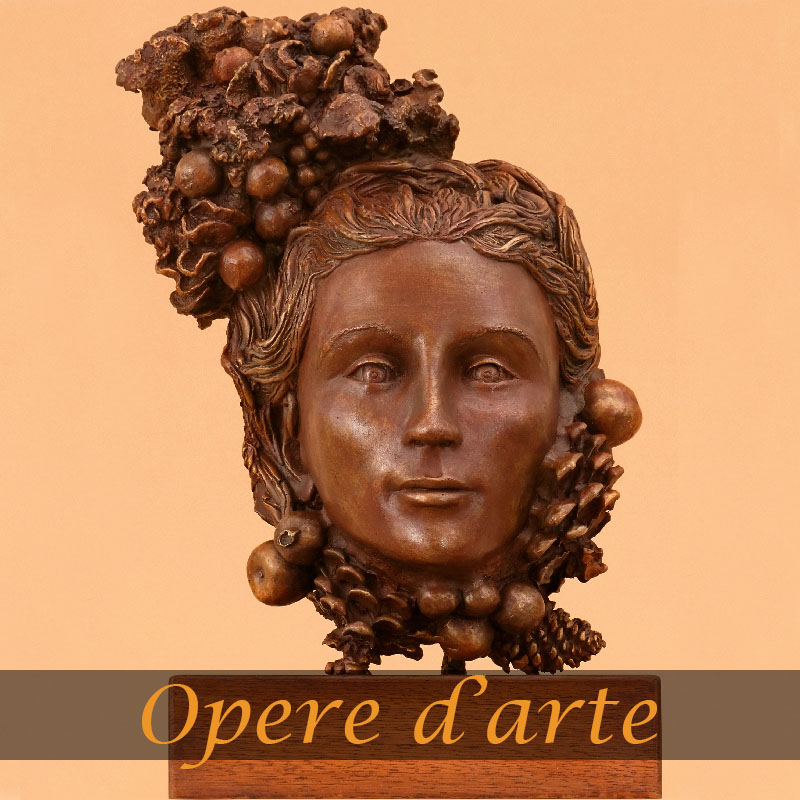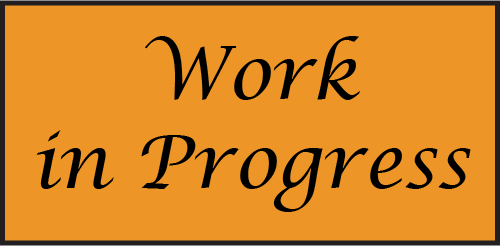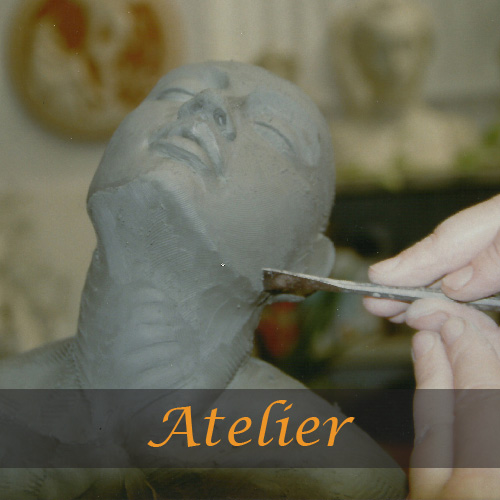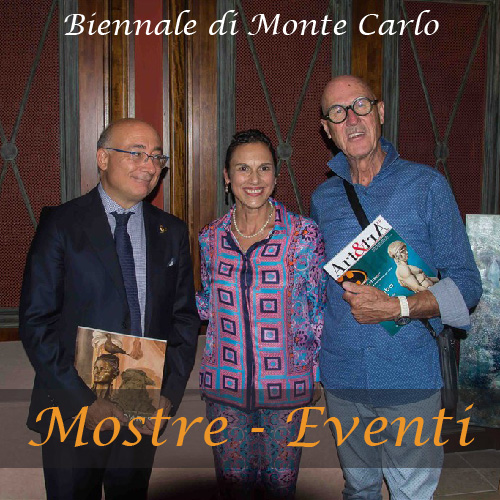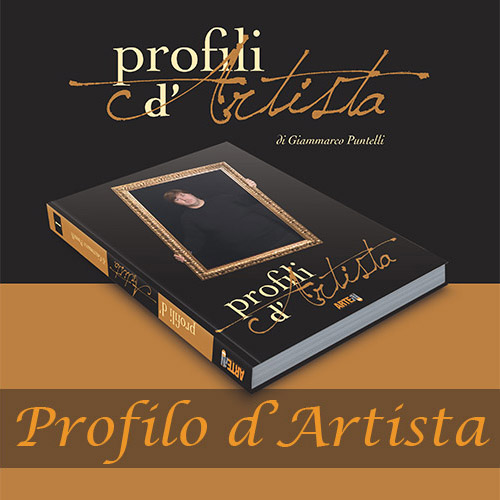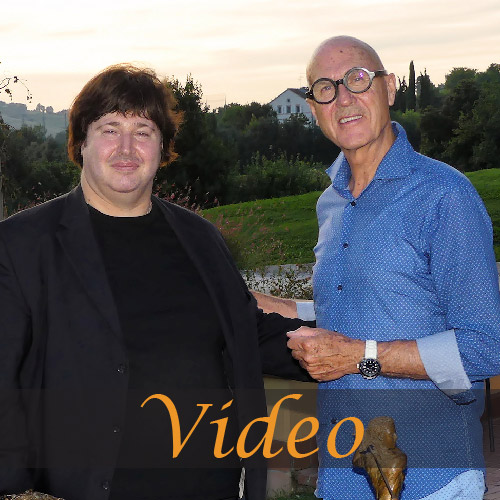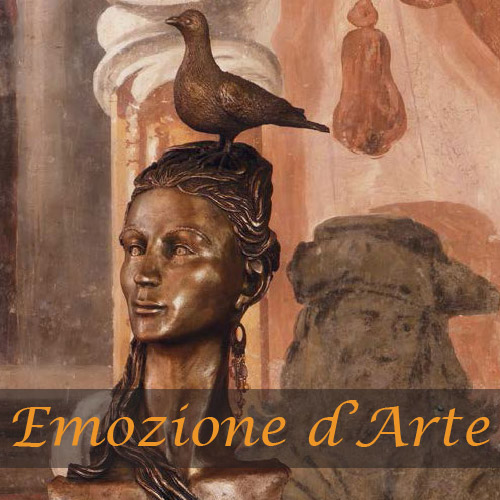

From design to sculpture: the fascination of form
An extraordinarily singular artistic journey is that of Johannes Genemans (1942, Leiden, Holland) developing with clear invention from Design to sculpture in the name of a vocation nurtured with endless enthusiasm right from childhood and matured following a long and intense career as a refined stylist in the Italian fashion industry. Between the end of the seventies and the early eighties his innovative footwear creations made their way all around Europe, consolidating the great success of the “Opanka” and “Arco Sport” brands that won over an ever more discerning and demanding clientele. Then, in the early nineties he retired from the world of fashion styling: he sold his commercial and manufacturing interests and rediscovered the age-old lure of art, in particular sculpture, a sacred fire that had burned within him ever since childhood.
Artistic training
In just a few years he forged ahead with his training and began his rise to fame.
He studied the classics of figurative art, visiting museums and art galleries, he spent time with the marble sculptors of Pietrasanta and Carrara, and he fine tuned his skills following the lessons of qualified masters, including Professor Sandro Sansoni, from whom he learned the various techniques for working with plastic. When admiring his numerous works today (figures, busts, portraits, wall mounted bass reliefs, commemorative monuments, both public and private, and modern symbolic compositions) one remains impressed by the stylistic perfection and the plastic softness of the pieces, from which an anxious atmosphere of eloquent emotional suspension shines through together with a limpid transcendence of the creation.
The vitality of sculpture
Johannes Genemans (who since 1993 has lived and worked permanently in the Marche region) is an amazing architect of morphologies skilfully punctuated by the masses in equilibrium. He is an intuitive and imaginative craftsman, able to take to the highest aesthetic level the neo classical and Renaissance concept of the perfect form while at the same time uniting the body and soul of every beautiful thing created with the innocence of a child deity descended from Olympus that plays on the seashore and imbues his statues made of sand with living breath, making them fluid, free and palpitating in the fascination of form, in the pureness of the soul. In the epiphany of a noble thought, he steals the heaven’s beauty to lend brilliance and vitality to the emotions of the heart and the sensations of the soul with, as only chosen artists can do. In the Genemans’ sculptures there is the joy of living one’s own humanity, a sentiment that moves between the innate quality of the objective fact and the idyllic vision of pure beauty, without which no work, by his way of understanding and working, would have reason to exist.
This artistic ideal finds its basis and inspiration in the exemplary models of the Greek culture, in which sculpture rises to expressions of the highest perfection with Fidia and Prassitele and in those of neoclassical art, where the nobility of the gesture embodies the extreme formal and technical perfection, in the light of a lofty idea of uncontaminated, eternal and universal beauty, as seen in the masterpieces of Antonio Canova, who the artist takes as his guide and the parameter of his prolific output. Genemans is inside this plastic and formal universe, suspended in perfect equilibrium between rational vision and poetic emotion, where the vitality of creative imagination releases the static nature of the shapeless mass.
Urged on by the angst of continuous obsolescence, he sculpts, models and panders to the material, gradually making the mentally visualised form emerge, brought to life through his skilful, agile and sensitive hands. And as if by sorcery, the material with no semblance or soul is turned into a magnificent plastic work of great awe and splendour; the more real and authentic the superficial aspect of the form, the deeper and more apparent the emotional, sensorial and spiritual atmosphere that makes the work something unique and original able to capture our gaze and touch our inner being.
A close analysis reveals that the Genemans’ sculptures are symbolic icons of this impassioned possession this life we lead, they are living, harmonious and dynamic “creatures” that move and dance in open space acting as a counter melody to the wonders of creation. In this way an incomparable scenario is created that in the loveliness of the form finds sublimation of the high concept of beauty and harmony, the inspirational leitmotif and ideal message of all his works.
A love song
In this continuous anabasis the Dutch artist feels the need to rediscover primeval wonders and splendours above all to do with the female figure, its dreamlike and mysterious universe, its way of managing itself with grace, elegance and seductive femininity. It is amazing how he absorbs himself in the female effect and transforms the emotional tensions into plastic images touched by luminescent atmospheres, bathed in mellifluous charm. Those sculpted by Genemans are maidens in bloom, inebriating stars, nymphs and legendary muses, a sparkling corollary of feminine figures seen, felt, dreamed, desired and loved that he moulds and examines, capturing their humus and vitality. The works in this admirable series are an intriguing medium for expressing self-reflective and significant moments of a clear and coherent conscience that vibrates with intensive pressure in the fullness of an idiom educated in beauty and harmony right from birth. In him, logical sense and creative imagination exist side by side perfectly without conflict and with the fresh purity of poetry.
Whether in his sculpture he configures a dreaming face, a quivering nude, a slender body, a spiteful Goddess or a genteel youth, the matter is entirely secondary, because what prevails in every module is always the light breath of the invention that elevates every image to universal lyrical and mental values, in that land without space and time where the dreams of man reside and the hopes of humanity exist.
This is manifested in the works to which the artists gives names taken from the world of flowers, mythology and literature, where the aesthetic canon of beauty becomes the visible form and reflection of a deep inner self. This is the case for Felizia lost in
loving thoughts, for Lobelia soft and sensual, for Camelia tender and abandoned in her eternal charm, for Mangolita wearing a mask strewn with autumnal fruits, for Altea the rising sun with her sharp and proud gaze; or yet again, for other significant feminine icons: the graceful Angelica captured in elegant rhythmical movement, the vibrant Ninfea with her arms pointing towards the heavens, the seductive Gardenia squatting on her heels in an offering without veils to the warmth of the sun and to the God of love, the very sweet Florenzia wrapped in soft and evocative drapery, the extremely beautiful and provocative Aphrodite with full and inviting breasts like “elegant champagne cups” (Madame de Pompadour), her hair flowing down over her chest, a dove on her head and with a precious and finely chiselled earring in whose links the souls of the lovers that have featured in her love life are symbolically enclosed.
The Inter-culture project
The collection of feminine figures does not end here, but is enhanced by more figures that are an integral part of an ambitious project called Inter-culture that Genemans intends to present at a grand exhibition or at an important public event. It is an ideally innovative and multicultural undertaking that sets itself the goal of spreading a universal message of peace and solidarity. These works are already defined and finished, sculpted in eternal bronze, depicting young mothers of different ethnicities responding to the names of Carolina the Mediterranean/European, Letizia the Brazilian/American, Dahkla the African, Orissa the Indian, Geisha the Japanese, Asmae the Arab, all joined together by a common and strong sentiment of love and peaceful coexistence, respect for human rights, safeguarding of health and an equal division of resources available in the world. These are sculptures of the latest generation, symbolic expressions of different cultural and ethnic roots, to which others will be added, in order to give voice, identity and representation to all the peoples of the five continents.
These are finely modelled “creatures” in their expressions, typical costumes, in the emblematic colours of their land, which all together express feelings of friendship, union, affection and responsibility for a better future for our planet.
Beauty as truth
It is important to note how Genemans manages to convey in his works the dynamic sense of movement and upward momentum, following the tensions of the human body, studied in meticulous detail and expressed with intense vitality harmonising gestures, movements and posture. Likewise, the floral and vegetable additions used, like flowing locks on the shoulders or gathered on the head endow the female subjects with an uneasy naturalness and an implied sense of the sacred. These unique aspects together with fashion accessories (hair combs, ribbons, scarves, hats, etc.) and the colours of the materials, define a scintillating and modernised scenic design that harks back to the imaginative work of the stylist who loves to set his creations against backdrops of squares or blow-ups, always inspired by an ideal of everlasting beauty that never fades, because “beauty is truth, truth beauty”, as the English poet John Keats wrote.
Favourite sculptors
The same inspired tension is seen in his other sculptures, all of extraordinary
technical and stylistic artistry, confirming a skilful dexterity acquired over the course of a long and prolific artistic career, first in haute couture design, then in
all-round sculpture. His works, created in bronze, marble, in clay, resin, directly painted onto plaster and the like, are inalienable models of wide artistic vision that recall elements of neoclassical representation, following in the finest Italian and European traditions from the progenitor Gian Lorenzo Bernini to Bertel Thorvaldsen (whose works adorn the Quirinale Palace in Rome) and his pupil, the Dutch sculptor Johannes van der Ven (who between 1840 and 1850 created various sculptures for the Vatican), from Antonio Canova, his illustrious mentor, to Rodin and Maillon, up to the most refined and inventive expressions of our times such as the maestro Emilio Greco, without however allowing these stylistic references to condition a free and genuine vocation, aimed at asserting the autonomy and originality of a pulsating expression of humanity and intimate poetry.
A symbolic sculpture
One example confirming this choice is represented by the Fisherman, a mega sculpture installed in the old town centre of Numana, a symbolic work much loved by the local residents, depicting the life of the courageous seafarers: his face eroded away by the sea salt and marked by hard work, his proud gaze looking out across the horizon, a fish net in his hand, make this humble and strong figure of the Adriatic Riviera a sort of legendary hero that could have come out of a story of adventure on the high seas by the American writer Herman Melville (Moby Dick, 1851, his greatest work).
The artist’s dream
From his youthful experiences in Germany and England to the small footwear boutique in Holland, called “Contessa” as a homage to Italy, from the first items of women’s clothing to footwear prototypes that emerged from his famous Euro Moda design studio in Civitanova Marche, Johannes Genemans has climbed the artistic road with seven-league boots. Today his sculptures have international appeal. The secret of his success? He himself provides the answer: “The beauty of the Riviera del Conero drove me to choose the Marche region. The captivating landscapes of this land full of harmony, light and colours are for me a never ending source of inspiration. Here I have been able to realise my dream as an artist”. On this fertile soil, the birthplace of the sublime painter Raphael Sanzio and the poet of “The Infinite” Giacomo Leopardi, Johannes Genemans the stylist, the creative talent, the purveyor of beauty and pure form, continues to work with remarkable vigour as the symbol of a new genesis, oozing out rivulets of truth and poetry.
Alvaro Valentini
Youth is happy because it has the ability to see beauty.
Anyone who keeps the ability to see beauty never grows old.
Kafka












